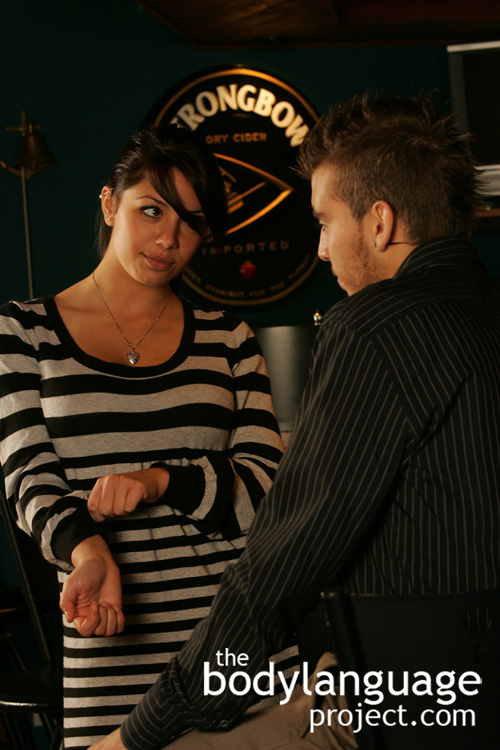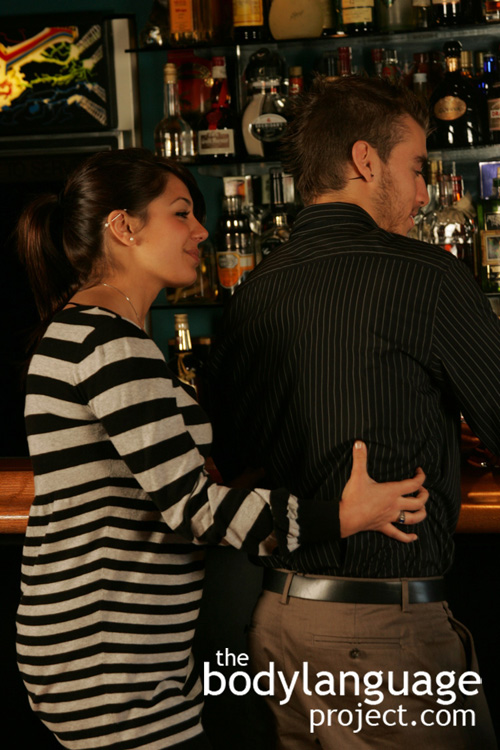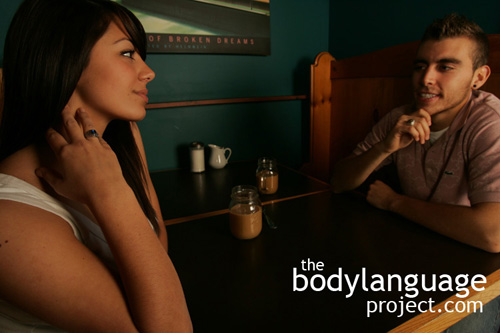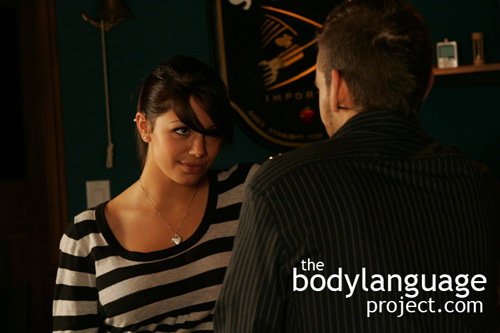In this chapter we looked extensively at courtship signals. We learned that men who are not familiar with body language tend to miss the signals put out by women, but that women can be misleading or confusing as message senders, and that it is the women’s job to signal sexual interest. We talked about the most common sexual signals women use, starting with displays of submission including pigeon toes or tibial torsion, shoulder shrugs, exposing the neck or wrists, head tilt, smiling, the forehead bow and childlike playfulness. The second class of signals, we discussed where ways to create sexiness such as tossing the hair, tilting the pelvis, the parade, the room encompassing glance, grooming and preening, the leg twine and leg crossing, hiking the skirt and or dressing provocatively. The third way women use to indicate interest that we covered related to proximity such as moving closer, pointing and eye contact and crossing the legs towards her object of affection. The remaining sexual signals were rapport building. We learned that women dress more provocatively and ornament more elaborately when most fertile and receptive to male advances, that echoing and mirroring is a big component in the mating dance, and how squeezing the hand can be used as a kiss test.
We then looked at the main behaviours that can be used by women to avoid male solicitation which included facial expressions such as yawning, frowning, sneering, gaze avoidance, upward gaze, looking away, and staring and gestures such as negative head shaking, nail cleaning, teeth picking or pocketing hands and postural patterns such as arm crossing, holding the trunk rigidly, closing the legs, body contact avoidance or pulling away. These were classified into three main categories; gaze avoidance, gestures and posture patterns.
As we saw, men solicit attention from women in a different way. Men will demonstrate dominance and virility to appear sexier to women, whereas women traditionally display submission. We saw that alpha men will use the cowboy posture to draw attention to their genitals, they will and should eliminate beta male body language to attract women, use more open postures such as legs spread apart, arms uncrossed, keep their hands away from their face, hold a firm upright torso, use their arms and hands to punctuate points in speech, speak slowly with a calm voice, use fewer filler words such as “umms” and “ahhs” and generally take up more space to appear more relaxed and in control. We learned that the dominant male posture happens by placing the feet flat with the body’s weight spread evenly with hips forward and legs slightly wider than shoulder width. We then looked at how men can use negative body language to trick women into thinking they are disinterested in a cat and mouse game, how tonality affects attraction with deeper being sexier, that random smiling can bring about good things and that men should wait until eye contact is established before smiling to anchor a smile to a specific target before breaking eye contact by looking downward. In our final section we covered the tens steps to intimacy.









